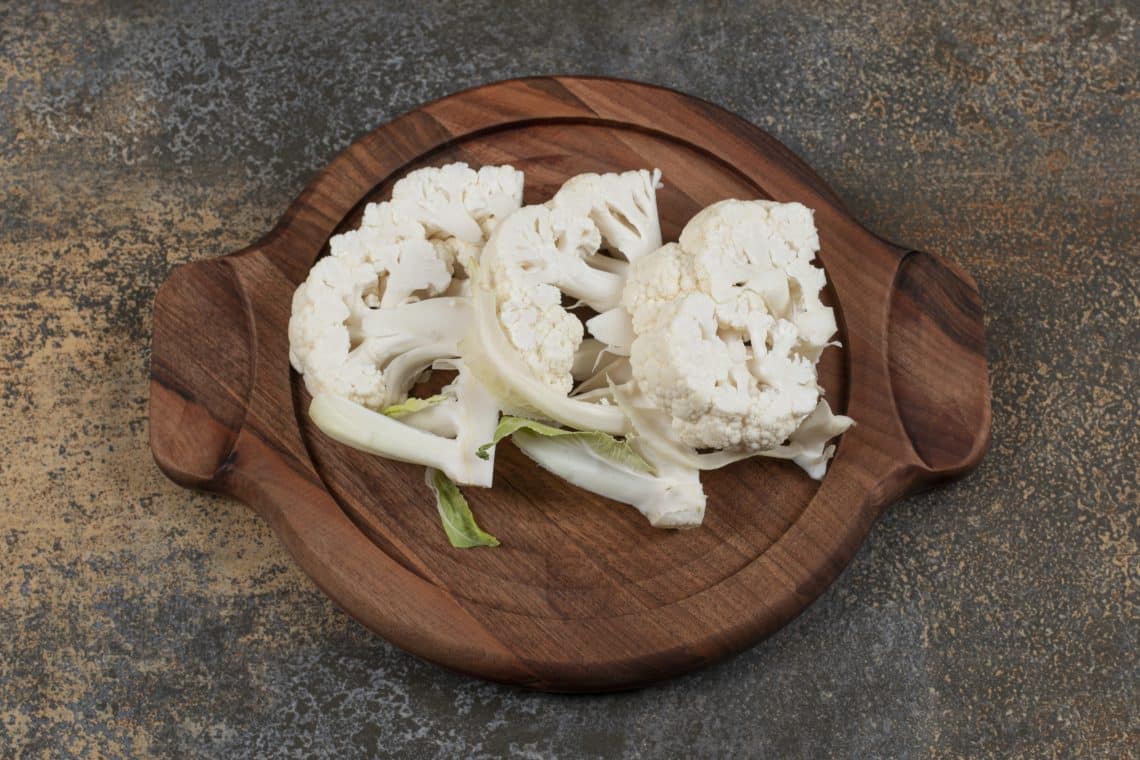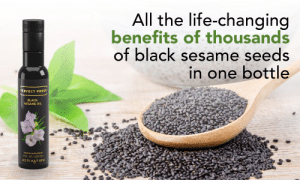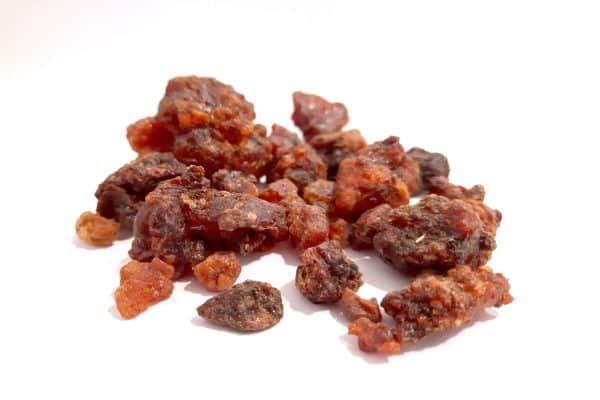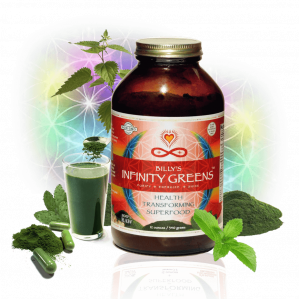What You Need To Know About The Amazing Cauliflower – Embracing the Versatility and 4 Top Health Benefit of Cauliflower
Embracing the Versatility of Cauliflower: Unleashing the Wonders of this Humble Vegetable
Overview

What is Cauliflower?
Let’s start with the basics. This humble vegetable is known for its tightly packed, edible flower buds, which form a compact head. While the most common variety is white, this vegetable can also be found in vibrant hues such as orange, green, and purple.
Types of Cauliflower
Cauliflower, a versatile cruciferous vegetable, comes in various types, each with its own unique characteristics, flavors, and colors. Here are some notable types of cauliflower:
- White Cauliflower: This is the most common and widely recognized type. It has a creamy white head with tightly packed florets. White cauliflower has a mild, slightly sweet flavor, making it a versatile choice for various recipes.
- Orange Cauliflower: This variety gets its vibrant orange color from higher levels of beta-carotene, a precursor to vitamin A. In addition to its eye-catching appearance, orange cauliflower offers a slightly sweeter taste compared to the white variety.
- Purple Cauliflower: Known for its stunning violet hue, purple cauliflower contains antioxidants called anthocyanins, which also contribute to the color of blueberries and red cabbage. The flavor is similar to white cauliflower but with a subtle, nutty undertone.
- Green Cauliflower (Romanesco): Romanesco cauliflower is a striking lime-green variety with a visually captivating fractal pattern. It has a mild, slightly nutty flavor and a crunchy texture. Romanesco is often used to add a unique touch to salads and vegetable trays.
- Cheddar Cauliflower: This type features a bright orange hue similar to orange cauliflower but with a more intense color. It is named “Cheddar” due to its resemblance to the color of cheddar cheese. The taste is sweet and mild, making it an appealing choice for both raw and cooked applications.
- Graffiti Cauliflower: This variety, also known as Sicilian purple cauliflower, has a deep purple head. It retains its color even when cooked, making it a visually striking addition to dishes. Graffiti cauliflower has a slightly peppery taste.
- Broccoflower: A cross between broccoli and cauliflower, broccoflower has a light green hue and a milder, sweeter flavor compared to traditional cauliflower. It features a compact head with small, densely packed florets.
- Fioretto (Flowering Cauliflower): Also known as “flower sprouts,” Fioretto is a hybrid between cauliflower and Chinese kale. It has small, delicate florets on long stalks and offers a mild and slightly sweet flavor. Fioretto is often enjoyed both raw and lightly cooked.
- Baby Cauliflower: Harvested early, baby cauliflower is a miniature version of regular cauliflower. It has a tender texture and a slightly milder flavor, making it a delightful addition to salads or vegetable medleys.
These diverse types of cauliflower not only add visual appeal to your meals but also offer various nutritional benefits. Experimenting with different varieties can add excitement to your culinary adventures while providing a range of vitamins, minerals, and antioxidants.
Unraveling the Nutritional Powerhouse
Cauliflower, scientifically known as Brassica oleracea var. botrytis, is a member of the Brassica genus, which includes other nutrient-packed vegetables like broccoli, kale, and Brussels sprouts. This cruciferous vegetable is rich in essential vitamins, minerals, and fiber, making it a nutritional powerhouse. Let’s take a closer look at the key nutrients found in this vegetable:
Vitamins and Minerals Galore
This vegetable is a great source of several vitamins and minerals that are vital for our overall health and well-being. It contains significant amounts of vitamin C, which acts as a powerful antioxidant, boosting our immune system and promoting collagen production. Additionally, this vegetable provides an array of B vitamins, including folate, which supports cell growth and development, and vitamin K, essential for blood clotting and bone health.
Minerals such as potassium, magnesium, and manganese are also found in this vegetable, contributing to various physiological functions in our bodies. Potassium helps regulate blood pressure, while magnesium plays a role in nerve function and muscle contraction. Manganese, on the other hand, is involved in the formation of connective tissues and antioxidant defenses.
Fiber for Digestive Health
One of the standout features of this vegetable is its high fiber content. Fiber is crucial for maintaining a healthy digestive system, promoting regular bowel movements, and preventing constipation. It also helps regulate blood sugar levels, lowers cholesterol levels, and aids in weight management by promoting feelings of fullness.
Carbs and Calories Facts
Here are the approximate values for the carbohydrate and calorie content of this vegetable based on a standard serving size:
Carbohydrates:
- One cup of raw cauliflower (about 100 grams) typically contains around 5 grams of carbohydrates.
Calories:
- One cup of raw cauliflower contains approximately 25 calories.
It’s important to note that these values are general estimates and can vary based on factors such as the specific variety of this vegetable and growing conditions.
Health Benefits of Cauliflower
Antioxidant Powerhouse
This vegetable contains a range of antioxidants that help protect our cells from damage caused by harmful free radicals. Antioxidants, such as vitamin C, beta-carotene, and quercetin, scavenge free radicals, reducing the risk of chronic diseases like heart disease, cancer, and neurodegenerative disorders. Incorporating this vegetable into your diet can provide a natural defense against oxidative stress and support overall health.
Anti-Inflammatory Properties
Chronic inflammation is a common underlying factor in many diseases, including arthritis, diabetes, and certain types of cancer. This vegetable contains compounds, such as sulforaphane and indole-3-carbinol, that possess anti-inflammatory properties. These bioactive compounds help reduce inflammation in the body, potentially alleviating symptoms and reducing the risk of chronic diseases.
Cancer-Fighting Potential
Research suggests that this vegetable, along with other cruciferous vegetables, may have potent cancer-fighting properties. The presence of glucosinolates, sulfur-containing compounds found in this vegetable, gives it the ability to inhibit the growth of cancer cells and prevent the formation of tumors. These compounds are known to activate enzymes that detoxify carcinogens, thus reducing the risk of cancer development.
Heart Health Booster
Maintaining a healthy heart is essential for overall well-being, and this vegetable can be an ally in this endeavor. This cruciferous vegetable contains compounds that promote heart health, such as sulforaphane and fiber. Sulforaphane has been shown to reduce the risk of cardiovascular disease by improving lipid profiles, reducing oxidative stress, and suppressing inflammation. Furthermore, the fiber content in this vegetable helps lower cholesterol levels and maintain healthy blood pressure.
How to Select and Store this Vegetable
Choosing the right cauliflower is essential for a flavorful dish. Look for heads with compact florets and crisp, green leaves. Avoid any discoloration or signs of wilting. Once you’ve found the perfect specimen, store it in the refrigerator, preferably in a perforated plastic bag, to maintain freshness. Use it within a week for optimal flavor and nutritional value.
Creative Ways to Enjoy this Vegetable
Cauliflower’s versatility extends beyond its nutritional value; it can be prepared in countless ways to satisfy a variety of taste preferences. Here are some creative ideas to incorporate this vegetable into your meals:
1. Cauliflower Rice
Cauliflower rice has become a popular alternative to traditional rice, especially for those following a low-carb or grain-free diet. Simply pulse this vegetable florets in a food processor until they resemble rice grains. You can then sauté or steam the cauliflower rice and onions, seasoned with salt, pepper, cumin, and the juice of one lime. Use it as a base for stir-fries, grain-free sushi, or as a side dish. This is very simple to make and one of my favorites.
2. Roasted Cauliflower Steaks
For a hearty and visually striking dish, try making cauliflower steaks. Slice a cauliflower head into thick slices, season with your favorite herbs and spices, and roast in the oven until tender and golden. These steaks make a delicious main course or a substantial side dish.
3. Cauliflower Buffalo Wings
Vegetarian or not, cauliflower buffalo wings are a fantastic alternative to traditional chicken wings. Dip cauliflower florets in a spicy batter, bake until crispy, and toss them in your favorite buffalo sauce. Serve with a side of ranch or blue cheese dressing for a delicious and healthier snack.
4. Cauliflower Pizza Crust
For those looking to reduce their carbohydrate intake, cauliflower pizza crust is an excellent option. Simply blend florets, remove excess moisture, mix with cheese, eggs, and seasonings, then shape into a crust. Bake until golden and crispy, then add your favorite pizza toppings for a low-carb and gluten-free pizza alternative.
5. Creamy Cauliflower Soup
On a chilly day, nothing beats a comforting bowl of creamy cauliflower soup. Sauté this vegetable with onions and garlic, add vegetable broth, and simmer until tender. Blend until smooth, and finish with a touch of cream or coconut milk for a velvety texture. Garnish with fresh herbs or a drizzle of olive oil for a satisfying and nourishing meal.
 6. Cauliflower Apricot Green Herb Salad
6. Cauliflower Apricot Green Herb Salad
Chop one head of this vegetable. In a large mixing bowl, add the finely chopped cauliflower, parsley (1 bunch stemmed), cilantro (1 bunch stemmed), scallions, mint (1/3 cup torn), Serano peppers (optional), and apricots (10-12 dried). Make the dressing by whisking together the lime juice (1/3 cup), garlic (4 cloves microplaned), salt (3/4 teaspoon), pepper (1/4 teaspoon), and olive oil (1/3 cup) in a small bowl or by shaking in a jar until emulsified and add to the salad mixture. Toast some slivered almonds and add it to the salad before serving. This is another one of my favorite recipes. Give it a try and let me know what you think.
How This Vegetable Helps with Certain Diseases
Cauliflower, like other cruciferous vegetables, is associated with various health benefits, and its consumption may contribute to the prevention or management of certain diseases. Here are some diseases and health conditions where this vegetable consumption may be beneficial.
- Cancer Prevention:
- this vegetable belongs to the cruciferous vegetable family, known for containing compounds like glucosinolates and sulforaphane. These compounds have been studied for their potential anti-cancer properties, and regular consumption of cruciferous vegetables may be associated with a reduced risk of certain cancers..
- Heart Disease:
- The fiber, potassium, and antioxidants in this vegetable contribute to heart health. These components may help lower blood pressure, reduce cholesterol levels, and support overall cardiovascular well-being.
- Inflammation:
- Some compounds in this vegetable, such as indole-3-carbinol, may have anti-inflammatory effects. Chronic inflammation is linked to various diseases, and a diet rich in anti-inflammatory foods may be beneficial.
- Digestive Health:
- The fiber content in this vegetable supports digestive health by promoting regular bowel movements and preventing constipation.
It’s important to note that while a balanced and varied diet, including this vegetable, can contribute to overall health, it’s not a substitute for professional medical advice or treatment. Individuals with specific health concerns or conditions should consult with healthcare professionals for personalized guidance.
Side Effects of Cauliflower
This vegetable is generally considered a nutritious and safe vegetable for most people when consumed as part of a balanced diet. However, like many foods, it may cause side effects in certain situations or for specific individuals. Keep in mind that individual responses to foods can vary, and it’s always a good idea to consult with a healthcare professional for personalized advice.
Here are some potential side effects of cauliflower:
- Digestive Issues: this vegetable contains fiber, which can cause gas and bloating in some individuals, especially if they are not accustomed to a high-fiber diet. Gradually introducing this vegetable into your diet and cooking it may help reduce these effects.
- Oxalate Content: this vegetable, like some other vegetables, contains oxalates. Individuals prone to kidney stones may need to moderate their intake of high-oxalate foods, including this vegetable. Cooking cauliflower can help reduce oxalate levels.
- Allergic Reactions: While rare, some individuals may be allergic to cruciferous vegetables, including this vegetable. Allergic reactions can range from mild symptoms like itching and hives to more severe reactions. If you suspect an allergy, seek medical attention.
- Thyroid Interference: Cruciferous vegetables contain compounds known as goitrogens, which can interfere with thyroid function in very high amounts. However, normal dietary intake is not typically a concern for most people. Cooking cruciferous vegetables can help reduce goitrogen levels.
After Thoughts
Cauliflower is a true marvel of the vegetable world, offering an array of health benefits and culinary possibilities. From its impressive nutrient profile to its antioxidant and anti-inflammatory properties, this cruciferous wonder deserves a prominent place on our plates. By incorporating this vegetable into our daily diet in creative and delicious ways, we can reap the rewards of its nutritional power and embrace a healthier lifestyle. So, why not embark on a culinary adventure with this vegetable and unlock its wonders for yourself?
Remember, whether it’s cauliflower rice, roasted steaks, or buffalo wings, the versatility of this vegetable knows no bounds. So go ahead, explore the possibilities, and savor the goodness of this incredible vegetable. Your taste buds and your health will thank you!
For natural and healing remedies, products, and supplements to help you live your most optimal healthy life, visit our store here!
Remember: Own Your Health!
If you enjoyed the information presented in this article, Please Share It. Help us reach more people and keep this website going! Thank you!
Note: The information provided in this article is for educational purposes only and should not be considered medical advice. Please consult with a healthcare professional or registered dietitian before making any significant changes to your diet or lifestyle.
References:
- USDA FoodData Central. (https://fdc.nal.usda.gov/)
- Dreher, M. L. (2018). Dietary Fiber in Vegetables and Fruits: Characteristics, Physiological Effects, and Health Benefits. Nutrients, 10(11), 1621. doi:10.3390/nu10111621
- Brassica oleracea var. botrytis. (https://www.ncbi.nlm.nih.gov/Taxonomy/Browser/wwwtax.cgi?id=4142)
- Melnyk, J. P., Wang, S., Marcone, M. F., & Shi, Y. (2010). Bioactive compounds and antioxidant capacity of cauliflower by-products. Food Research International, 43(9), 2223-2233. doi:10.1016/j.foodres.2010.07.011
- National Kidney Foundation. (2020). Oxalate Content of Foods. Retrieved from https://www.kidney.org/atoz/content/oxalate
- USDA FoodData Central. (2022). Cauliflower, Raw. Retrieved from https://fdc.nal.usda.gov/fdc-app.html#/food-details/169964/nutrients
- Ríos-Hoyo, A., & Cortés, M. J. (2016). Nutritional and functional properties of cauliflower (Brassica oleracea L. var. botrytis) and their food applications – a review. International Journal of Food Science & Technology, 51(8), 1633–1641. doi:10.1111/ijfs.13151
- Verma, S., & Singh, A. (2019). Potential health benefits of cruciferous vegetables: A review. Journal of Food Biochemistry, 43(9), e12970. doi:10.1111/jfbc.12970
- Slavin, J. L., & Lloyd, B. (2012). Health benefits of fruits and vegetables. Advances in Nutrition, 3(4), 506–516. doi:10.3945/an.112.002154
- Verma, S., & Singh, A. (2019). Potential health benefits of cruciferous vegetables: A review. Journal of Food Biochemistry, 43(9), e12970. doi:10.1111/jfbc.12970.
- Higdon, J. V., Delage, B., Williams, D. E., & Dashwood, R. H. (2007). Cruciferous vegetables and human cancer risk: epidemiologic evidence and mechanistic basis. Pharmacological Research, 55(3), 224–236. doi:10.1016/j.phrs.2007.01.009.
- Slavin, J. L., & Lloyd, B. (2012). Health benefits of fruits and vegetables. Advances in Nutrition, 3(4), 506–516. doi:10.3945/an.112.002154.
- Marín, L., Miguélez, E. M., Villar, C. J., & Lombó, F. (2015). Bioavailability of dietary polyphenols and gut microbiota metabolism: Antimicrobial properties. BioMed Research International, 2015, 905215. doi:10.1155/2015/905215.
- Anderson, J. W., Baird, P., Davis, R. H., Ferreri, S., Knudtson, M., Koraym, A., Waters, V., & Williams, C. L. (2009). Health benefits of dietary fiber. Nutrition Reviews, 67(4), 188–205. doi:10.1111/j.1753-4887.2009.00189.x.





 6. Cauliflower Apricot Green Herb Salad
6. Cauliflower Apricot Green Herb Salad
























0 Comment